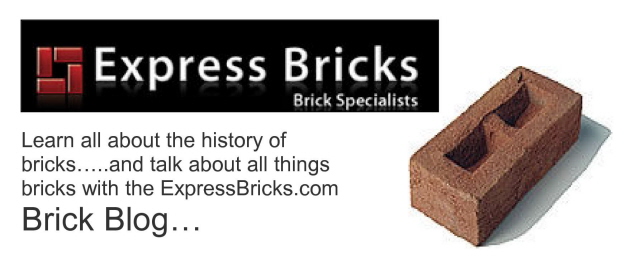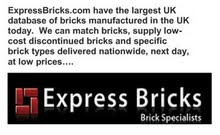Blockleys , Bovingdon, Broadmoor , Caradale , Carlton , Charnwood , Coleford , Dunton , Fresh field Lane , Furness , H G Mathews , Hanson , Hemmings , Ibstock , London , Ketley , Michelmersh , Normanton , Northcot , Phoenix , Swarland, Terca(Wienerberger), Tyrone, York Handmade. PD Brick, Esk Brick, Raeburn.
Brick Manufacturers from the past
The Brick Business, Chelwood, Ambion, Steetley, Tarmac, Redland, Tilcon, Redbank, Nottingham Brick Company, Belton Bricks, Marshalls, Boral Edenhall, Beacon Hill, Marley, Hamill, Elliotts,
Wirecut/Extruded Brick Manufacturers
Blockleys, Broadmoor, Caradale, Carlton, Hanson, Hemmings, Ibstock, Ketley, Northcot, Phoenix, Swarland, Terca Bricks(Wienerberger), Tyrone
Handmade Brick Manufacturers
Bovingdon, Charnwood, Coleford, Dunton, Furness Fresh field Lane, H G Mathews, Ibstock, Michelmersh, Northcot, York Handmade.
Pressed Brick Manufacturers
Normanton, Furness, LBC
Machine Made Stock Brick Manufacturers
Blockleys, Bovingdon, Dunton, Fresh field Lane, H G Mathews, Hanson, Ibstock , Michelmersh, Terca Bricks(Wienerberger)
Kiln Brick Burning
After all bricks have been allowed time to dry they are placed in a kiln for burning which finishes off the brick to achieve the optimum strength and colour. There a few different types of kilns which are currently used to burn bricks.
The Scotch Kiln is the most commonly used in the UK. This is a rectangular building which is open at the top and has side doors with fireholes built from fire bricks. The kilns will contain approximately 80, 000 bricks at full capacity. Raw bricks are arranged in the kiln leaving gaps in between each brick to ensure an even burn.
It takes approximately three days to burn off the moisture from the bricks, at which point the firing is increased for the final burn. It takes between 48 and 60 hours to completely burn a brick to achieve its maximum strength. As mentioned before the bricks from the centre of kiln will be of the highest quality whilst the ones from the edges are sometimes clinkered and unsuitable for exterior work.
Up Draft Kiln - Used more frequently for handmade bricks and in small brick yards, this old fashioned kiln is only up to 15 feet high.
Down Draft Kilns are generally of a beehive type shape with fire produced outside of the kiln and carried in through flues. It is believed that all types of clay whether it be pottery or brick work, burn more evenly in a down draft kiln. For Terra-cotta brickwork this type of kiln is usually used.
Continuous kilns are the most expensive type of kiln to construct. This type of kiln is a continuously fired tunnel in which the bricks pass through very slowly on a rail to achieve a consistently durable brick. This is continuous conveyor belt with bricks being dried and added at one end while at the other end they are being burnt. This is a very efficient way of burning bricks. They also achieve a greater number of grade 1 bricks using this method.
The colour of brick is influenced by the chemical and mineral content of the mixture but also how high the temperature was during burning. Bricks are generally red, but an increase in temperature can change them to dark red, purple, brown or grey. Bricks containing silicate depend on the colourant used. The colour and place of manufacture is reflected in the brick names.
Subscribe to:
Post Comments (Atom)









No comments:
Post a Comment